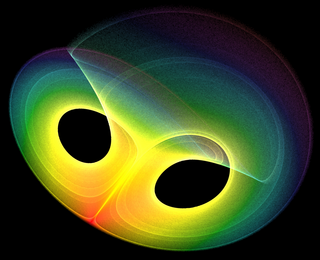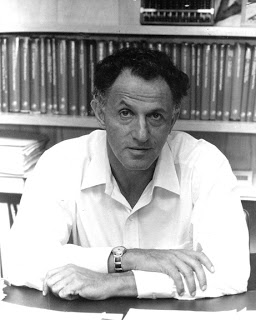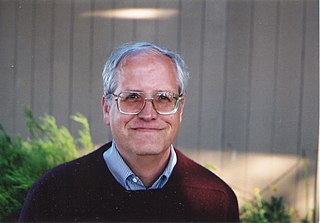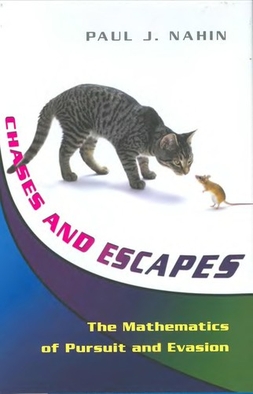Related Research Articles
Calculus is the mathematical study of continuous change, in the same way that geometry is the study of shape, and algebra is the study of generalizations of arithmetic operations.

Discrete mathematics is the study of mathematical structures that can be considered "discrete" rather than "continuous". Objects studied in discrete mathematics include integers, graphs, and statements in logic. By contrast, discrete mathematics excludes topics in "continuous mathematics" such as real numbers, calculus or Euclidean geometry. Discrete objects can often be enumerated by integers; more formally, discrete mathematics has been characterized as the branch of mathematics dealing with countable sets. However, there is no exact definition of the term "discrete mathematics".

Analysis is the branch of mathematics dealing with continuous functions, limits, and related theories, such as differentiation, integration, measure, infinite sequences, series, and analytic functions.

In mathematics, differential calculus is a subfield of calculus that studies the rates at which quantities change. It is one of the two traditional divisions of calculus, the other being integral calculus—the study of the area beneath a curve.
The calculus of variations is a field of mathematical analysis that uses variations, which are small changes in functions and functionals, to find maxima and minima of functionals: mappings from a set of functions to the real numbers. Functionals are often expressed as definite integrals involving functions and their derivatives. Functions that maximize or minimize functionals may be found using the Euler–Lagrange equation of the calculus of variations.

Optimal control theory is a branch of control theory that deals with finding a control for a dynamical system over a period of time such that an objective function is optimized. It has numerous applications in science, engineering and operations research. For example, the dynamical system might be a spacecraft with controls corresponding to rocket thrusters, and the objective might be to reach the Moon with minimum fuel expenditure. Or the dynamical system could be a nation's economy, with the objective to minimize unemployment; the controls in this case could be fiscal and monetary policy. A dynamical system may also be introduced to embed operations research problems within the framework of optimal control theory.

Richard Ernest Bellman was an American applied mathematician, who introduced dynamic programming in 1953, and made important contributions in other fields of mathematics, such as biomathematics. He founded the leading biomathematical journal Mathematical Biosciences, as well as the Journal of Mathematical Analysis and Applications.
In mathematics, a differential equation is an equation that relates one or more unknown functions and their derivatives. In applications, the functions generally represent physical quantities, the derivatives represent their rates of change, and the differential equation defines a relationship between the two. Such relations are common; therefore, differential equations play a prominent role in many disciplines including engineering, physics, economics, and biology.

Ennio De Giorgi was an Italian mathematician who worked on partial differential equations and the foundations of mathematics.
Hilbert's twentieth problem is one of the 23 Hilbert problems set out in a celebrated list compiled in 1900 by David Hilbert. It asks whether all boundary value problems can be solved.

Lawrence Craig Evans is an American mathematician and Professor of Mathematics at the University of California, Berkeley.
Pursuit–evasion is a family of problems in mathematics and computer science in which one group attempts to track down members of another group in an environment. Early work on problems of this type modeled the environment geometrically. In 1976, Torrence Parsons introduced a formulation whereby movement is constrained by a graph. The geometric formulation is sometimes called continuous pursuit–evasion, and the graph formulation discrete pursuit–evasion. Current research is typically limited to one of these two formulations.
Calculus is a branch of mathematics focused on limits, functions, derivatives, integrals, and infinite series. This subject constitutes a major part of contemporary mathematics education. Calculus has widespread applications in science, economics, and engineering and can solve many problems for which algebra alone is insufficient.
In mathematics, secondary calculus is a proposed expansion of classical differential calculus on manifolds, to the "space" of solutions of a (nonlinear) partial differential equation. It is a sophisticated theory at the level of jet spaces and employing algebraic methods.
Rufus Philip Isaacs was an American game theorist especially prominent in the 1950s and 1960s with his work on differential games.
A princess and monster game is a pursuit–evasion game played by two players in a region.
In game theory, differential games are a group of problems related to the modeling and analysis of conflict in the context of a dynamical system. More specifically, a state variable or variables evolve over time according to a differential equation. Early analyses reflected military interests, considering two actors—the pursuer and the evader—with diametrically opposed goals. More recent analyses have reflected engineering or economic considerations.

A timeline of calculus and mathematical analysis.
A search game is a two-person zero-sum game which takes place in a set called the search space. The searcher can choose any continuous trajectory subject to a maximal velocity constraint. It is always assumed that neither the searcher nor the hider has any knowledge about the movement of the other player until their distance apart is less than or equal to the discovery radius and at this very moment capture occurs. The game is zero sum with the payoff being the time spent in searching. As mathematical models, search games can be applied to areas such as hide-and-seek games that children play or representations of some tactical military situations. The area of search games was introduced in the last chapter of Rufus Isaacs' classic book "Differential Games" and has been developed further by Shmuel Gal and Steve Alpern. The princess and monster game deals with a moving target.

Chases and Escapes: The Mathematics of Pursuit and Evasion is a mathematics book on continuous pursuit–evasion problems. It was written by Paul J. Nahin, and published by the Princeton University Press in 2007. It was reissued as a paperback reprint in 2012. The Basic Library List Committee of the Mathematical Association of America has rated this book as essential for inclusion in undergraduate mathematics libraries.
References
- ↑ Becker, A. T., & Garcia, J. (2018, January 22). Wolfram Demonstrations Project. The Homicidal Chauffeur Problem. https://demonstrations.wolfram.com/TheHomicidalChauffeurProblem/
- ↑ R. Isaacs, Games of Pursuit, RAND Corporation (1951)
- ↑ R. Isaacs, Differential Games: A Mathematical Theory with Applications to Warfare and Pursuit, Control and Optimization, John Wiley & Sons, New York (1965), PP 349–350.